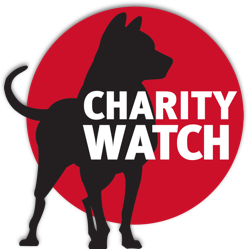GuideStar, Charity Navigator and BBB Wise Giving Alliance have started a campaign called "The Overhead Myth" which asserts that focusing on the percentage of a charity's budget spent on administrative and fundraising expenses—or overhead ratios—"can do more damage than good." Overhead costs comprise all of a charity's expenses which are not charitable program expenses. The Overhead Myth condemns the use of charities' spending ratios as a measurement to evaluate nonprofit performance. CharityWatch urges you not to be persuaded to ignore this essential metric for understanding how charitable dollars are spent.
Unfortunately, rather than debunk a purported "myth" related to the usefulness of charity spending ratios, The Overhead Myth actually spreads a myth by claiming that the money charities spend on training, planning and evaluations must be classified as overhead. In fact, much of the spending in these areas can legitimately be classified as charitable program expenses. For example, when a relief charity pays for training its staff to administer first aid, the training cost is a program expense. When a charity plans how it will relieve suffering in response to a disaster and later evaluates the effectiveness of its response, the expenses related to this planning and evaluation are also charitable program expenses, not overhead.
Common sense tells you that if you want to support a charity that makes grants to fund medical research, you would prefer to donate to a charity that spends 70% of its budget on research grants and 30% on overhead costs, rather than donate to a charity that only spends 20% on research grants and 80% on overhead costs. It's important to pay attention to how charities spend donated dollars.
We also believe that outcomes and program quality are important factors by which to judge a charity, but evaluations of these factors are particularly expensive and time-intensive to conduct. It can be extremely difficult for donors to obtain unbiased information since many program evaluations are conducted by the charities themselves. Charities, not unlike businesses, are prone to cherry-pick their most flattering attributes when measuring and promoting themselves, even if these qualities are not the ones most significant to consumers or donors. A company boasting that its ice cream bars are superior because they are low in fat will probably not promote the fact that its bars are also loaded with high fructose corn syrup.
Comparing different charities with similar causes on the basis of outcomes can also give donors the wrong impression about which charity is more effective. For example, one drug counseling charity may boast that it has a high rate of positive client rehabilitation outcomes, but may fail to mention that it only accepts those with minor drug problems into its programs. Another drug counseling charity may have lower rehabilitation outcomes by comparison because a higher percentage of its clients struggle with more serious addiction. Comparing the effectiveness of charities based on their number of positive outcomes is simplistic and can mislead donors if the charities' programs or populations served are not substantially similar.
Don't be fooled by sources of charity information that claim to rate the program quality or outcomes of thousands of charities. An adequate evaluation of the multiple, diverse charitable programs of this number of charities would require expertise, manpower, and financial resources far beyond those of any existing charity monitoring organization. What these rating services actually do, or plan to do, is question a charity about whether or not it evaluates its own programs, then provide a "rating" of the charity's program quality based on its responses. Charities, not unlike people, are prone to inflate their worth and accomplishments and downplay their failures. Objective and comparable information about the quality of a charity's programs is unlikely to be obtained by essentially asking charities to evaluate themselves.
Fundraising companies, charity consultants, and marketers love to divert donors' attention to cherry-picked program outcomes while encouraging them to ignore the amount of money charities pay to their businesses. But don't buy their argument that it's okay for charities to spend unlimited amounts of money on fundraising on the basis that doing so will eventually bring in more dollars for charities to spend on their programs. The fallacy of this argument is that total annual giving in the U.S. has remained steady for many years at about 2% of personal disposable assets. Charitable dollars are limited. So if donors ignore fundraising ratios and charities greatly ramp up their fundraising expenditures, billions of dollars could be shifted out of charitable programs and spent on fundraising instead. This would be great for fundraising businesses and consultants, but not so great for donors, charities, and the populations they serve.
CharityWatch agrees that overly-simplistic overhead ratios or computer-automated ratings absent of critical analysis are of extremely limited value to donors. However, we strongly believe that the carefully considered and analytical ratios produced by CharityWatch are useful giving tools for donors who want to feel confident that their charitable contributions are well spent.
